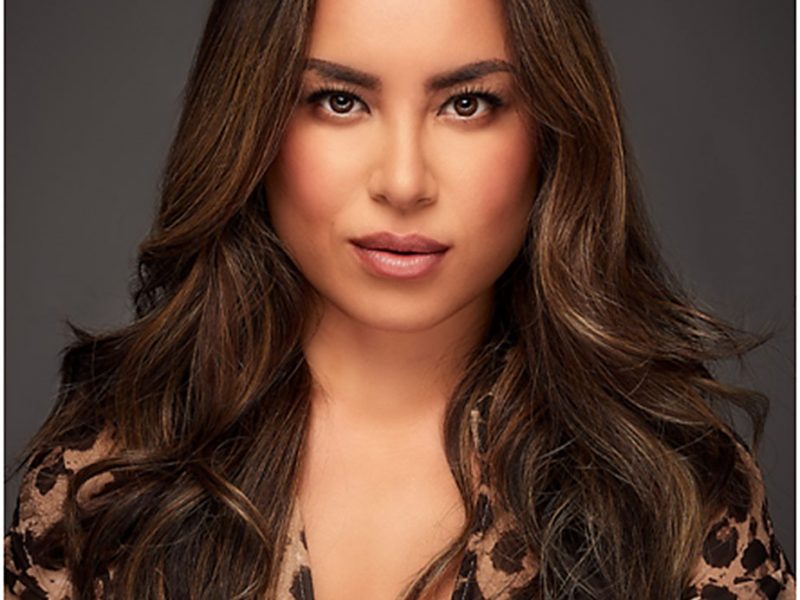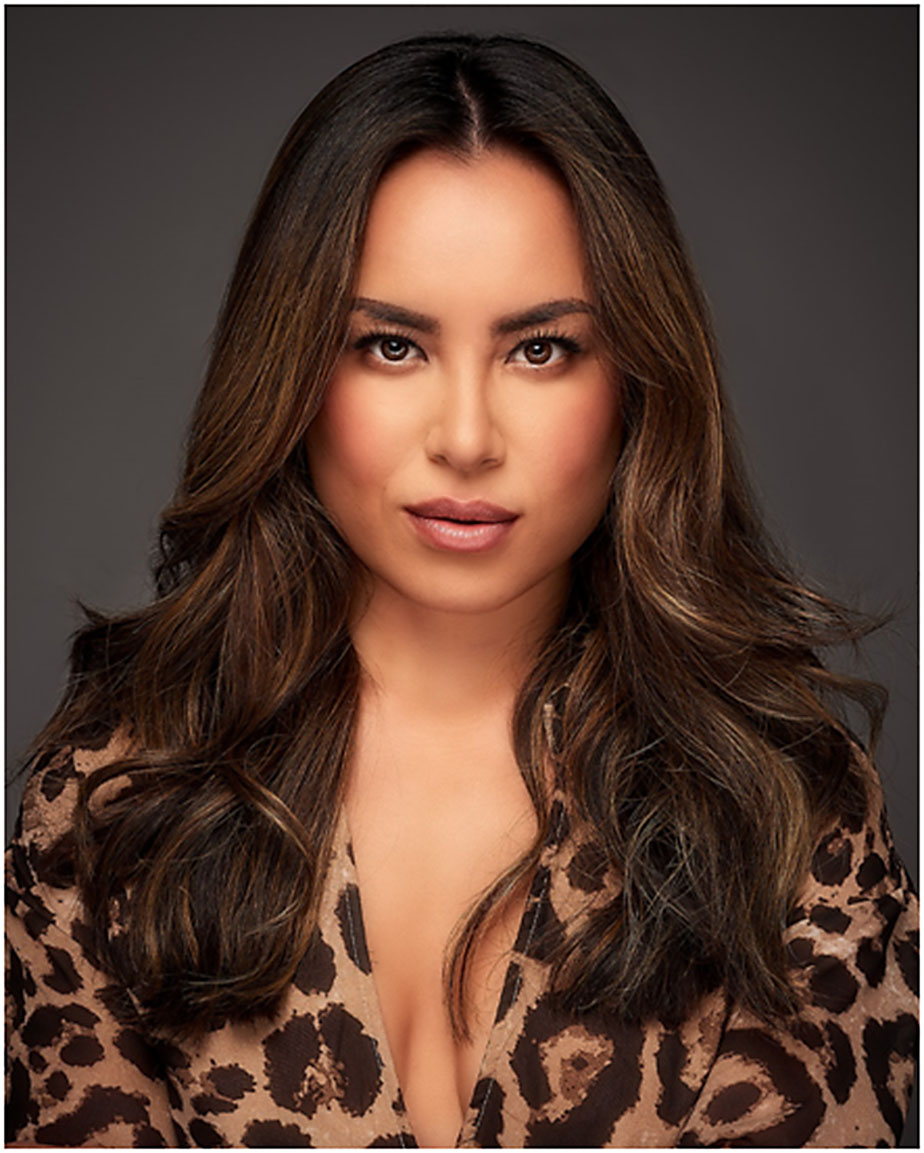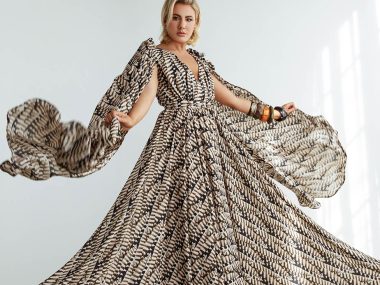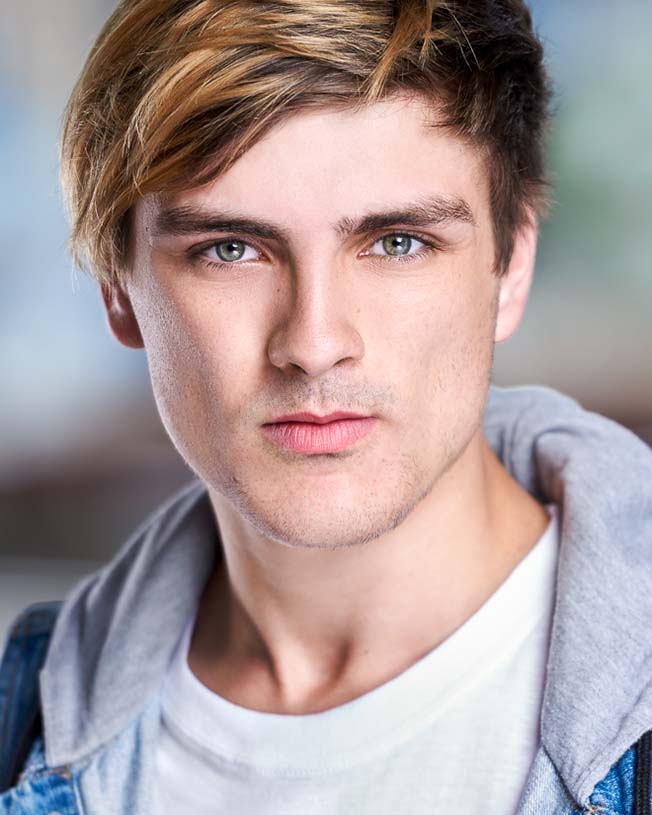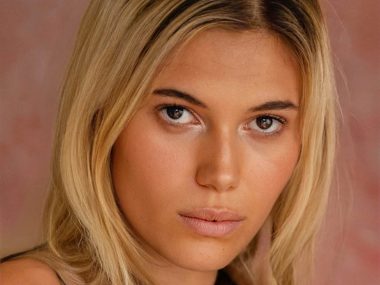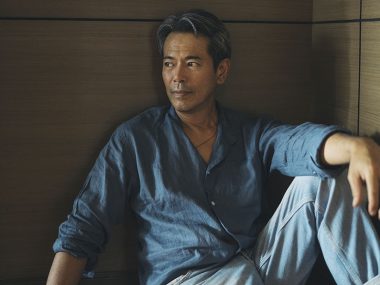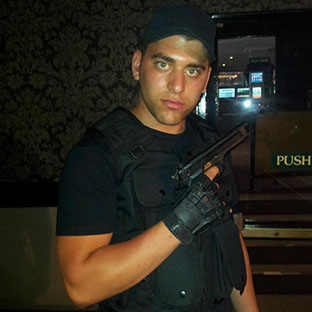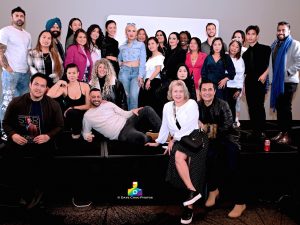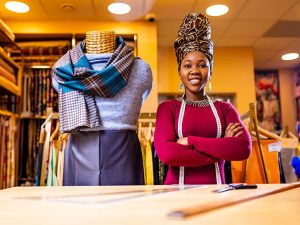Actors that have gone through casting calls understand the importance of their headshots. A headshot is arguably the most vital marketing tool for an actor to land gigs. While things have changed with time – such as now using color headshots instead of black and white – there remain certain elements that help make for a successful headshot.
First, it is important to enlist the services of a professional headshot photographer. It is with their expertise that the essential elements for a good acting headshot can be captured. This is because headshots are made, not taken. Using a point-and-shoot camera – like the one on a smartphone – is to take a picture. But you work with a professional to create a photo. It is a collaborative process with various elements that come together to make it happen.
A Theatrical Headshot, Such as This, Has a Lot of Elements Behind-the-Scenes That Come Together to Create an Actor Headshot
An Actor’s Wardrobe for Headshots
One of the first elements to consider when collaborating to make headshots includes the actor’s wardrobe. It is not uncommon for people to downplay the importance of wardrobe since a headshot is often cropped from around the chest or higher. So, how important is the top if that is the case?
Color coordination, the complexity of the top, the chosen style. All these elements are part of the story you are attempting to convey. If you opt to wear a white top against a black background, it will help convey one theme while wearing vice versa, black top against a white background might help convey something else.
Different colors can create ideal contrast too as certain colors are melodic with one another while others conflict. So, selecting a color palette is important. The colors chosen should take into consideration the colors of one’s eyes, hair, and background.
In addition to colors, textures and layers matter too. Simple textures, like a cotton shirt, are commonly most ideal for commercial actor headshots while wool or leather might be more suited for theatrical looks. Similarly, the fewer layers you wear, the more suited the look will be for commercial acting shots. Putting on more layers, such as a leather jacket, will start to lean more toward theatrical looks.
Hairstyles for Headshots
In most cases, it is a no brainer that an actor’s hairstyle matters. From short hair to long hair and colored hair and more, your hair will make a statement. A long-haired male that also has a beard and mustache is often going to be pegged for a certain type of character.
Similarly, a female with very short hair might also be pegged toward a certain type of character. It is such elements that lead an actor down a certain path of the castings they are likely to get attention for. In most cases, it is ideal for an actor to use a hairstyle that can fit multiple types of roles. This allows for more opportunities for varied casting calls.
Your Eyes Say Everything
When it gets down to doing the actual headshot session, an actor will be doing most of their talking with their eyes. This is when those acting classes will help. And it is not just the eyes but also the eyebrows.
It is well established that the human face can make many micro-expressions. Sometimes, these micro expressions are all the difference from one shot to another. One tiny change in a look can be just the right amount of difference.
However, remember that your face can express so many things – happiness, sadness, disgust, surprise, contempt, anger, fear, and more. You will want to channel these expressions to suit the tone of the shot you are after. For example, if you smile during what is supposed to be a planned theatrical or dramatic look, you might convey “evil” instead of whatever else you intended.
Your Mouth Does Some of the Talking
Most people without training use their mouths as the main component of making a facial expression. It is not uncommon when someone is asked to smile for a photo that their lips are ear to ear while their eyes freeze. An effective smile usually involves the mouth and eyes.
So, be sure that your mouth only does some of the talking and make sure your eyes do the heavy lifting. This is not to downplay the importance of the expression your mouth is conveying. All of a person’s facial elements work in concert to convey a look or impression.
Body Language Matters
It is also not uncommon for people to think a person’s body language is irrelevant for headshots since the shot is cropped from around the chest up. But there are many possibilities here too. There is a lot that can go wrong or be done for good effect.
For example, you might tilt one shoulder higher. You might wrap your shoulder around, so it is under your chin. You might elongate your neck. It can also be a good idea to lower the chin a bit and to slightly extend it toward the photographer.
You can also do a slight head tilt. How about instead of a standing square with the camera, turn for a more profile look, and on both sides. You might be seated and can lean in. There are infinite body postures that can change or shape a look you are after.
The Overall Look
Your wardrobe, your hairstyle, the expressions your eyes are making and the expression your mouth is also making all work in concert to create an overall look. It takes a bit of effort for these to come together.
However, there is more to it than just showing up in an outfit and making faces. The setting and equipment to be used are also instrumental. So, selecting the right studio and professional photographer is another consideration.
The Background
Whether it is a studio setting or an outdoor setting, where you will make the headshots is another factor to consider. In most cases, keeping the background simple will be important. This is because the headshot is almost always about the person in the photo and not where they are at.
The busier the background, the more it detracts from the actor in the photo. So, if it is in a busy setting the photographer might opt to blur out the background as much as possible.
Like with an outfit, the color of the background is also important to consider and coordinate. Dark colors will be common for theatrical acting headshots while bright cheery colors are ideal for commercial looks. Be sure the studio and photographer you opt to work with has abundant flexibility in these choices.
Lights, Camera…
Finally, the equipment to be used is very important. It is the difference between being able to create a professional image versus just taking a selfie-like picture on a smartphone. This begins with the camera. Most professional still photographers will use a full-frame sensor camera.
They will also have a variety of portrait lens options rather than attempting to use a one-size-fits-all focal length approach. This might include the use of prime or zoom lenses. Basically, a prime lens is fixed at one focal length, such as 85mm. A zoom lens will cover a range, such as 70-200mm.
A good photographer will also need to have command of manipulating studio lighting or working with natural light. The ability to shape light in a studio will afford the best control for a polished look. However, there are some people that, when done correctly, prefer the look of natural light. Some photographers are also able to work with both, mixing natural light and studio light, for what can sometimes produce a unique eye-catching look.
The Intent of Your Chosen Headshots
When you have put this all together, an actor will then ultimately need to decide which photos from the session to use in his or her portfolio. This can often be a difficult decision. During a common headshot session, a photographer can take dozens to hundreds of photos. And an actor will commonly be advised to use only around a half dozen photos in their portfolio.
This is when collaborating with their manager on the types of castings an actor is best suited for is important. Or, if still searching for a manager, the actor should have command for the types of roles he or she is likely best for. This way, the types of shots an actor wants will be known in advance of a shoot, making selecting a bit easier and faster. And the sooner an actor gets good headshots working for them the sooner they can get to work too.
Author Bio:
Rafael Larin is a professional photographer and operates Headshots by The Light Committee, an award-winning studio in the Los Angeles area, He provides professional headshot services for actors, corporate executives, models, and others for business or social uses.
